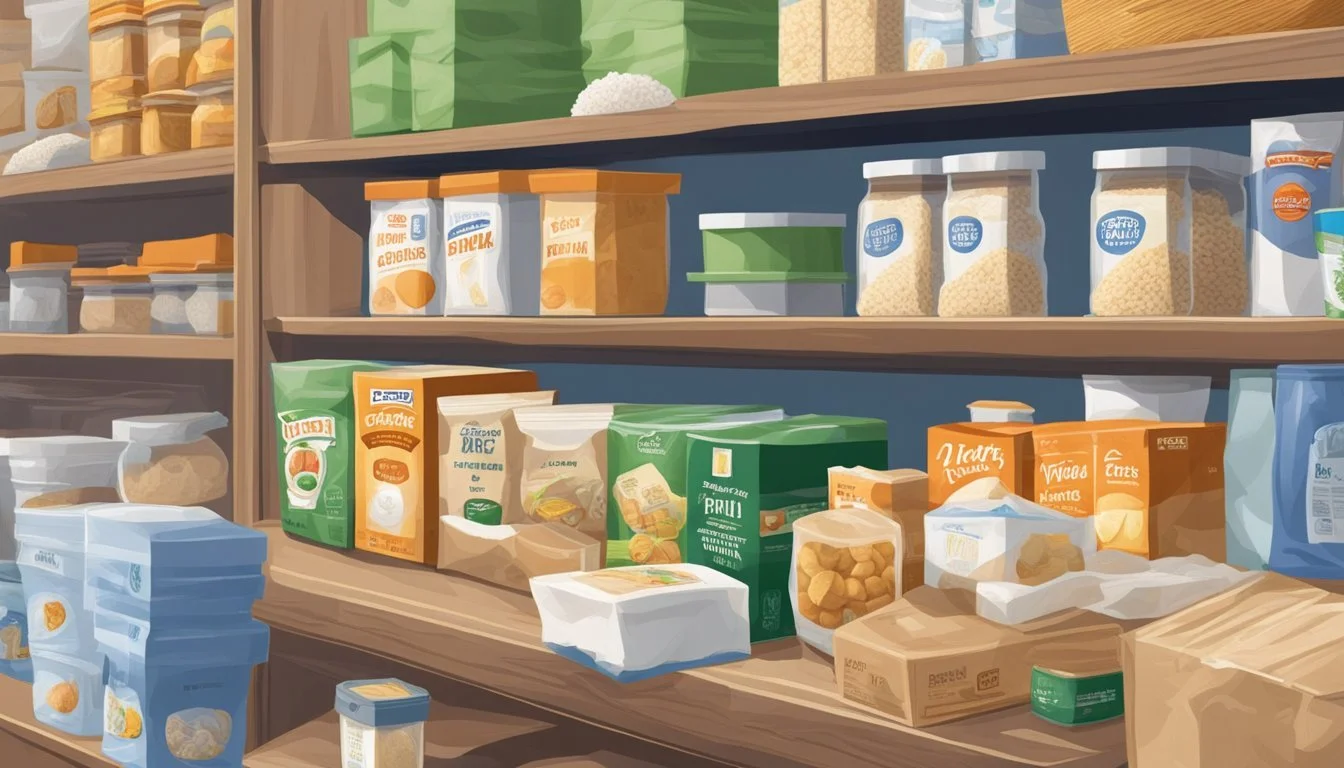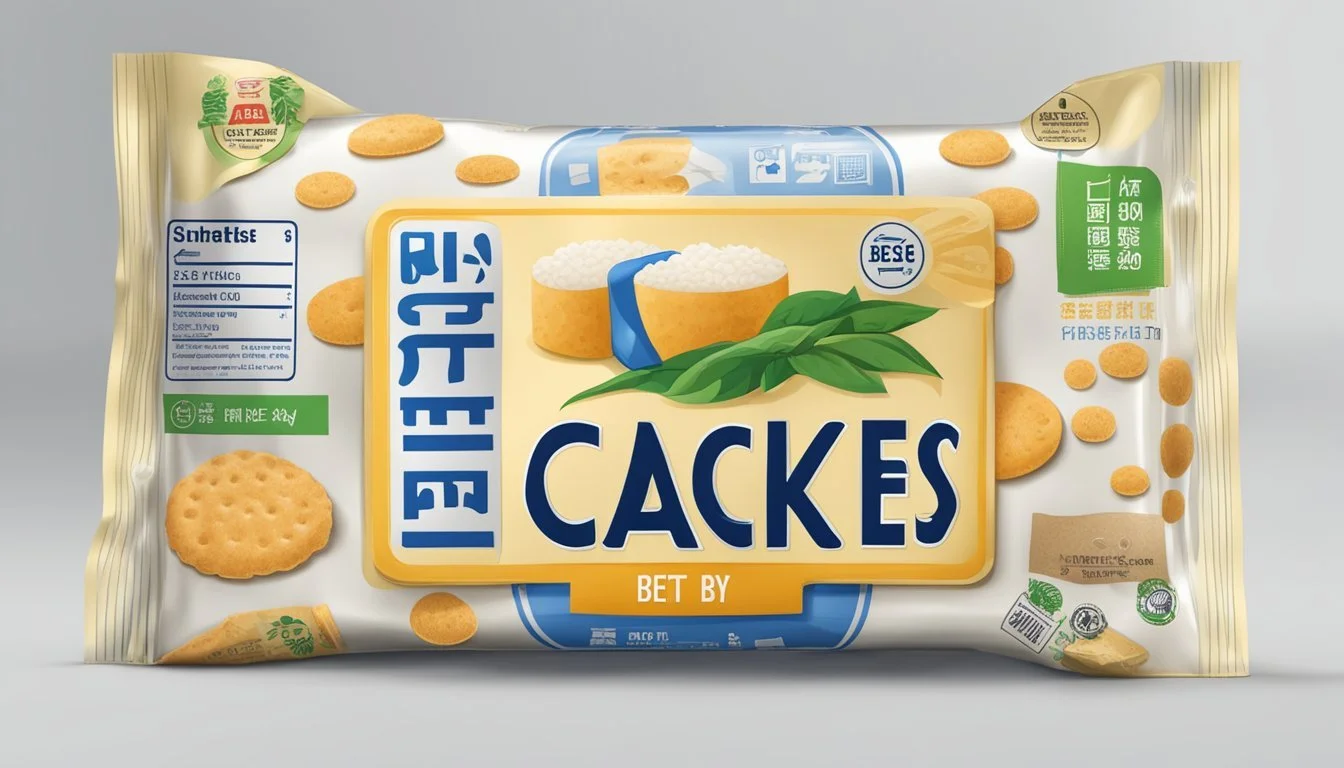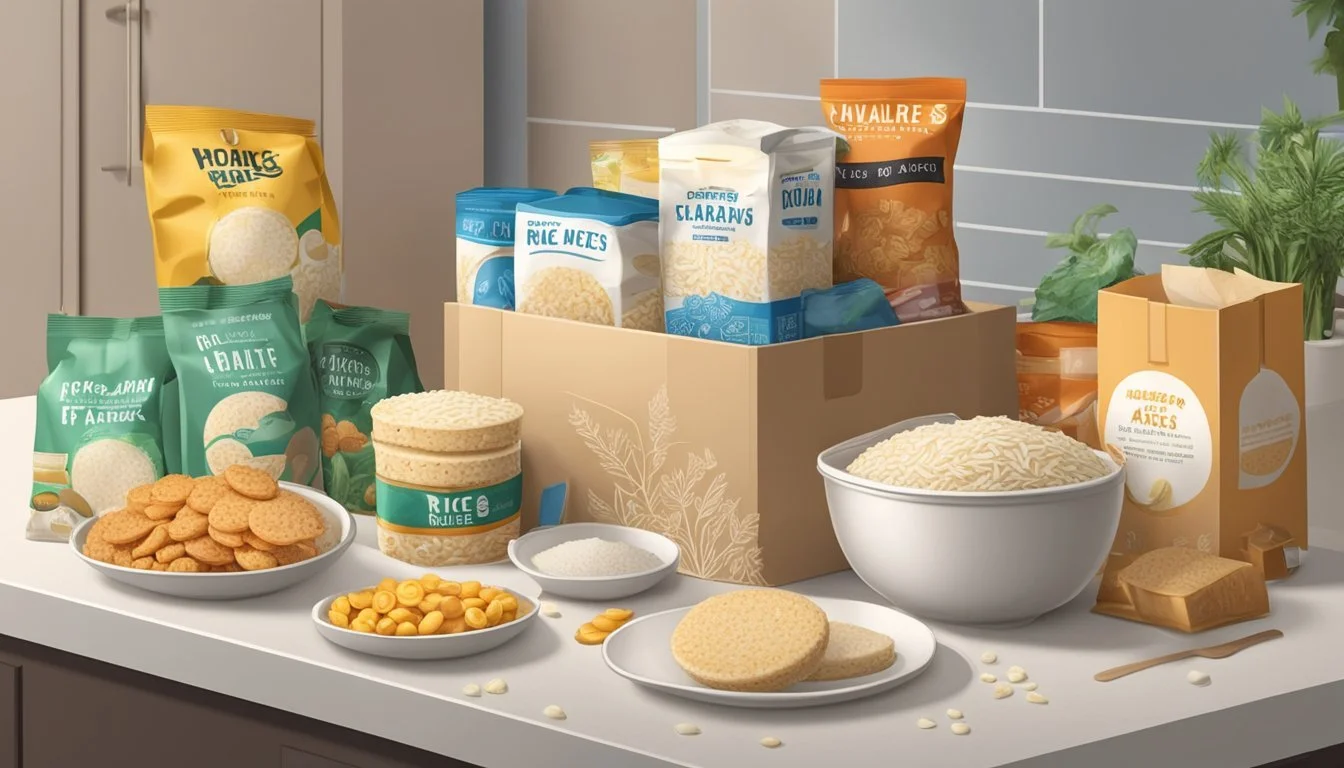Do Rice Cakes Go Bad?
Shelf Life and Storage Tips
Yes, rice cakes do go bad. Unopened rice cakes in airtight packaging can last up to 6 months or more. Once opened, their shelf life decreases significantly. Proper storage is key to extending their freshness.
Signs that rice cakes have gone bad include a bad taste, changes in texture, and a possible rancid smell. Fresh rice cakes should be soft and chewy, but spoiled ones might feel slimy or have an off-putting texture. Trust your senses when determining their quality.
Consuming expired rice cakes can pose health risks. Harmful bacteria like Salmonella, E. coli, or Listeria may develop, causing foodborne illnesses such as vomiting, nausea, abdominal cramps, and diarrhea. Always check for signs of spoilage to ensure safe consumption.
Understanding Rice Cakes
Rice cakes come in various forms and have different health benefits. These snacks are popular for being low in calories and gluten-free, making them suitable for various diets.
Composition and Types
Rice cakes are primarily made from puffed rice, which can be either white or brown rice. White rice cakes are more common, but brown rice cakes offer additional nutrients and fiber. There are also Korean rice cakes known as tteok, which are denser and chewier.
Types of rice cakes can also vary based on flavor and additives. Some include salt, sugar, or flavorings like seaweed or sesame seeds. Understanding the differences helps in choosing the right type for your dietary needs.
Health Benefits and Dietary Considerations
Rice cakes are generally low in calories and can be a healthy snack option. Since they are gluten-free, they fit well into a gluten-free diet. They provide a modest amount of energy without many calories, which is ideal for weight management.
These cakes are also low in fat and can offer a quick energy boost. Depending on the type of rice used, some may provide fiber and essential minerals. Incorporating rice cakes into a balanced diet can be beneficial, particularly for those looking to maintain or lose weight.
Shelf Life and Storage
Rice cakes have varied shelf lives depending on storage methods and conditions. Proper storage can significantly extend freshness and prevent spoilage.
Optimal Storage Conditions
To maintain the freshness of rice cakes, it is crucial to store them in a cool, dry place. An unopened package of rice cakes can be stored in a pantry or cupboard, where they can last for 6-8 months.
Once opened, transfer the rice cakes to an airtight container to prevent moisture and air exposure. Under these conditions, they are best consumed within a few weeks.
For longer storage, rice cakes can be frozen. Wrap them individually in plastic wrap or aluminum foil before placing them in a freezer-safe airtight container or bag. Frozen rice cakes can last for approximately 3 to 4 months.
Impact of Storage on Freshness
Storing rice cakes properly directly affects their texture and taste. Keeping them in a cool, dry place ensures that they remain crispy and flavorful. Improper storage, such as exposure to heat or moisture, can cause them to become stale or develop an unpleasant texture.
Refrigeration can extend the life of homemade rice cakes to about 72 hours, while store-bought varieties may last up to a year in the pantry. However, refrigeration is not ideal for preserving the crunchiness of rice cakes.
When freezing rice cakes, allow them to thaw at room temperature before consumption. This helps in retaining their best texture and flavor. Proper storage techniques are essential to enjoy fresh and tasty rice cakes for a longer period.
Identifying Spoilage
Understanding when rice cakes have gone bad is crucial for ensuring they are safe and pleasant to eat. This involves looking for visible signs of spoilage and noticeable changes to flavor and texture.
Visible Signs of Spoilage
Visible signs of rice cakes going bad include mold growth and changes in color. Mold may appear as small, fuzzy or slimy patches, often in shades like green, blue, or white. While rice cakes are normally a consistent light color, any darkening or spotting can indicate spoilage.
Another key sign is a rancid smell. Fresh rice cakes are almost odorless unless flavored. If they emit any sour, musty, or off-putting odor, they should be discarded. Checking the packaging can also help. Packaging that is damaged, excessively moist, or smells bad is a warning sign.
Changes to Flavor and Texture
Changes in the flavor and texture of rice cakes are significant indicators of spoilage. A fresh rice cake should have a satisfying, slightly chewy texture. If the rice cake feels soft, slimy, or sticky, it is likely spoiled. On the other hand, if the cake is stale and no longer crispy, it has also degraded in quality.
Flavor is crucial as well. A bad taste is a clear sign that the rice cake is no longer good. If the cake tastes sour, bitter, or just off, it should not be consumed. Always trust your taste buds when they signal something is wrong.
Preservation Techniques
Proper storage can extend the lifespan of rice cakes significantly, and freezing may also be an option to maintain their quality over a longer period. Understanding these techniques is key to ensuring that rice cakes remain safe and enjoyable to eat.
Extending Freshness with Proper Storage
Proper storage is essential for extending the freshness of rice cakes.
Unopened rice cakes should be stored in their original packaging. This packaging is typically designed to keep out moisture and air, which can degrade quality.
Once opened, rice cakes should be transferred to an airtight container. This minimizes exposure to air, which can make them stale.
Plastic wrap can also be used to provide an additional layer of protection against moisture.
Storing rice cakes in a cool, dry place away from direct sunlight will help maintain their texture and flavor. Temperature fluctuations can cause them to become stale more quickly.
Freezing and Its Effects
Freezing can extend the lifespan of rice cakes beyond their typical shelf life.
When freezing rice cakes, wrap them individually in plastic wrap. This prevents them from sticking together and protects against freezer burn.
Place the wrapped rice cakes in an airtight container or a ziplock bag. This extra layer of protection ensures that they remain fresh and do not absorb any odors from the freezer.
Freezing can slightly alter the texture of rice cakes. They may become a bit tougher once thawed.
To thaw frozen rice cakes, leave them at room temperature for a few hours or microwave them for a short period on a low setting. This helps restore their original texture.
Using these preservation techniques can help extend the life of rice cakes and maintain their quality, making them safe and enjoyable to eat for a longer period. Proper storage and freezing are effective ways to keep rice cakes fresh and tasty.
Consumption and Safety
When it comes to rice cakes, understanding their edibility and potential risks is key. Proper evaluation can help determine if they are safe to eat, and recognizing hazards can prevent health issues.
Evaluating Edibility
To determine if a rice cake is safe to eat, several factors must be considered. First, unopened rice cakes in airtight packaging can last up to six months if stored properly in a dry, cool place away from sunlight.
Check for signs of spoilage. Spoiled rice cakes may become slimy or discolored. They often lose their crunchiness, becoming chewy which indicates they are no longer fresh. Bad taste is another clear sign that they aren't fit for consumption.
Freezing can extend the shelf life. Frozen rice cakes last approximately three to four months. Thaw them at room temperature to retain the best texture and flavor before eating.
Risks Associated with Spoiled Rice Cakes
Eating expired rice cakes poses several risks. Spoiled rice cakes may harbor bacteria like Salmonella or E. coli, which can lead to food poisoning. Symptoms include nausea, vomiting, and diarrhea.
Risk of choking is another concern, especially for young children or older adults, since expired rice cakes may become too chewy. Potential exposure to mycotoxins can also occur if mold develops, leading to severe health effects.
Always consider allergic reactions when consuming rice cakes, especially if contaminated or expired, as reactions can range from mild to severe. Proper storage and regular checks are essential to ensure safety.
Usage and Versatility
Rice cakes are a popular low-calorie snack that can be enjoyed in various ways, making them both versatile and easy to incorporate into meals. They pair well with a range of toppings and can be a handy ingredient in a variety of recipes.
Creative Toppings and Recipes
Rice cakes shine when combined with an array of toppings. For a sweet option, consider peanut butter and sliced bananas. Avocado with a sprinkle of salt and pepper offers a savory choice. Another approach involves topping rice cakes with hummus and sliced vegetables like cucumbers or bell peppers, which not only enhances flavor but also adds nutrients.
Homemade combinations can also be a fun way to enjoy rice cakes. Spread Greek yogurt on the cake and drizzle with honey for a refreshing snack. You can also make mini pizzas using rice cakes as a base, topped with tomato sauce, cheese, and any preferred vegetables.
Incorporating Rice Cakes into Meals
Rice cakes are not just for snacking; they fit seamlessly into various meals. Korean rice cakes, for instance, can be used in traditional dishes like Tteokbokki, which features spicy sauce and fish cakes. For a breakfast idea, use rice cakes as a gluten-free toast replacement, topped with scrambled eggs and spinach.
In lunches or dinners, rice cakes can act as a crisp base for open-faced sandwiches. Try layering them with turkey, cheese, and lettuce. They can also accompany soups or salads, providing a crunchy contrast. For a quick yet satisfying meal, pair rice cakes with a tuna salad or as a substitute for crackers with a cheese board.







